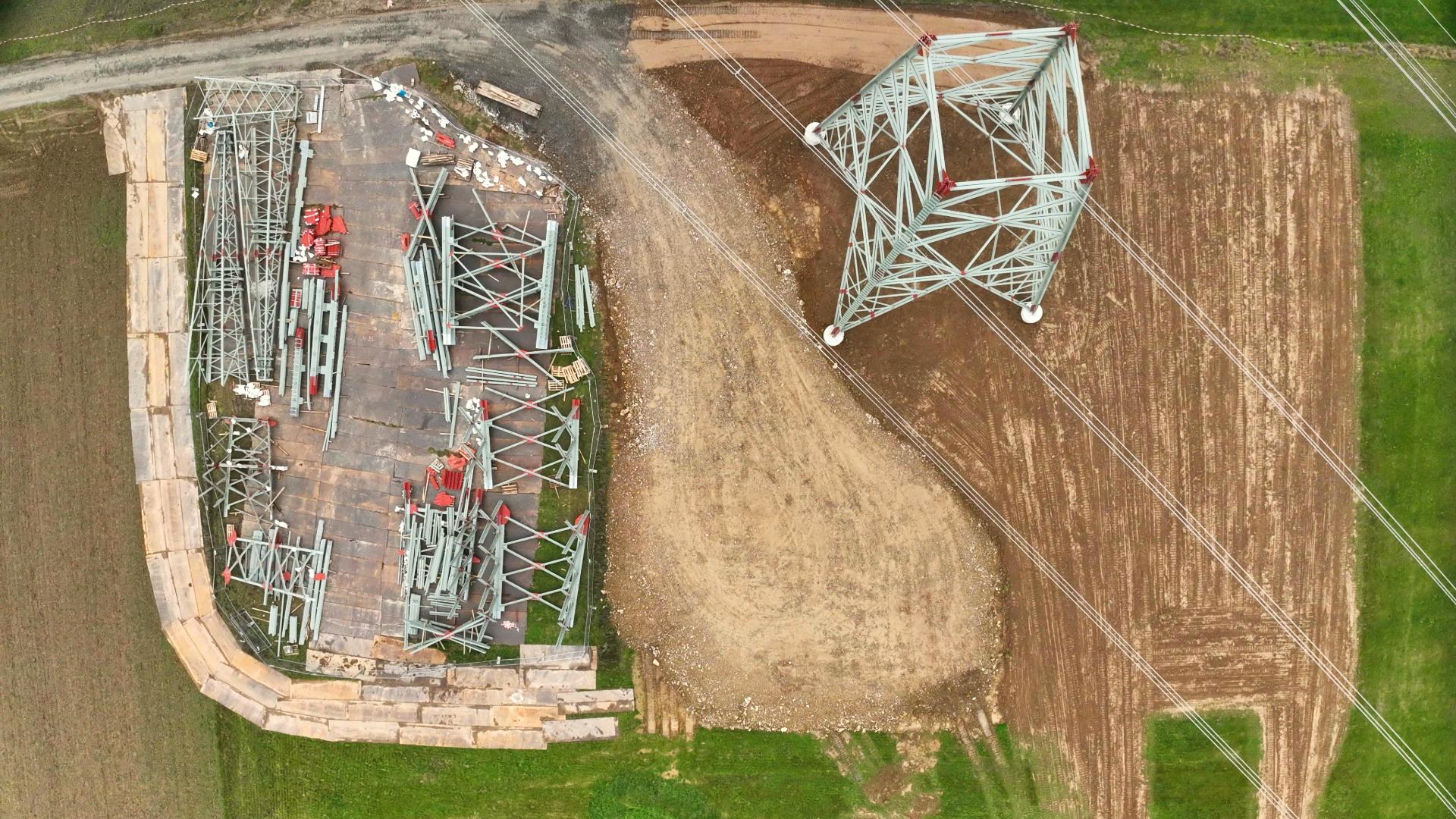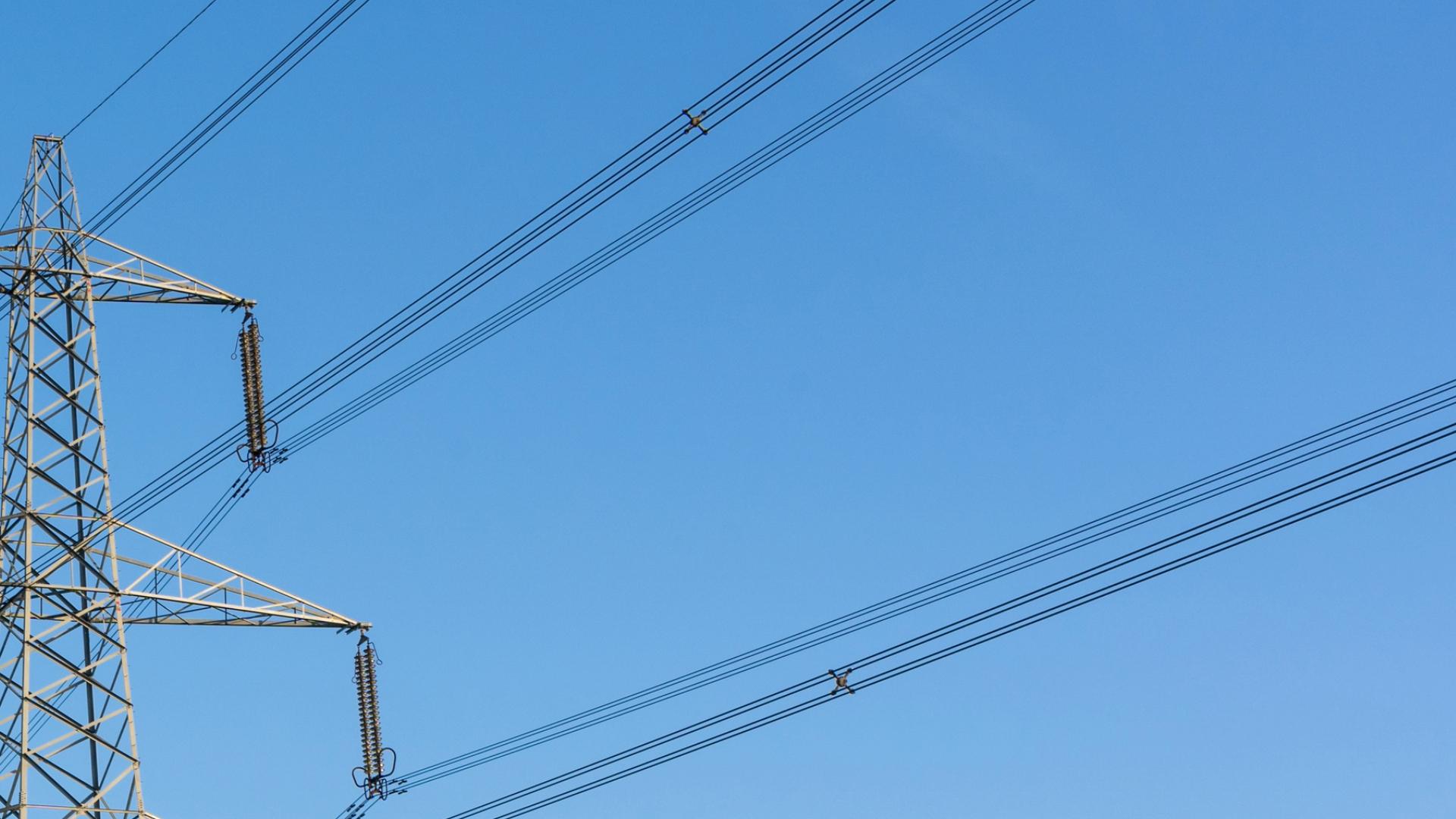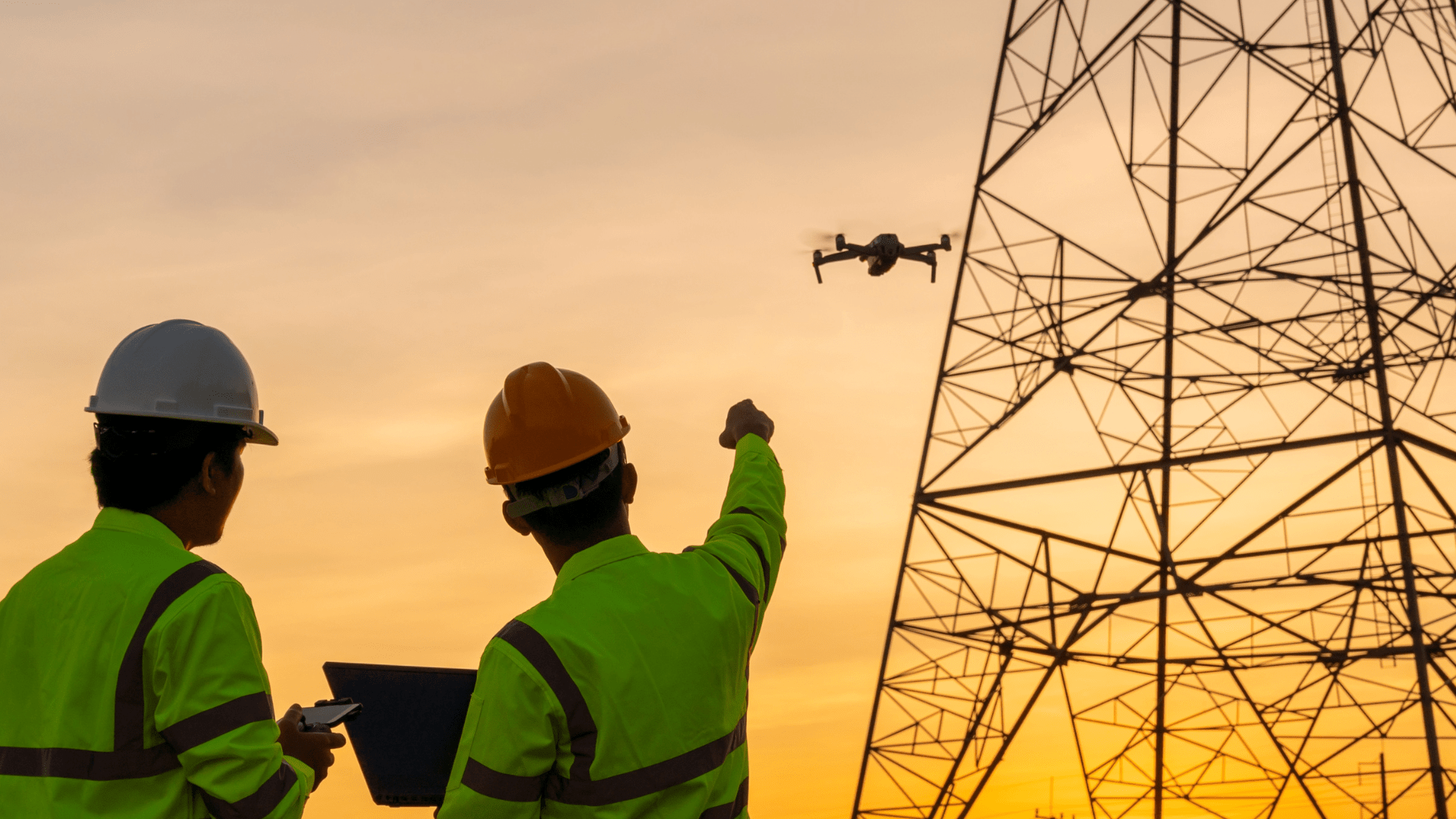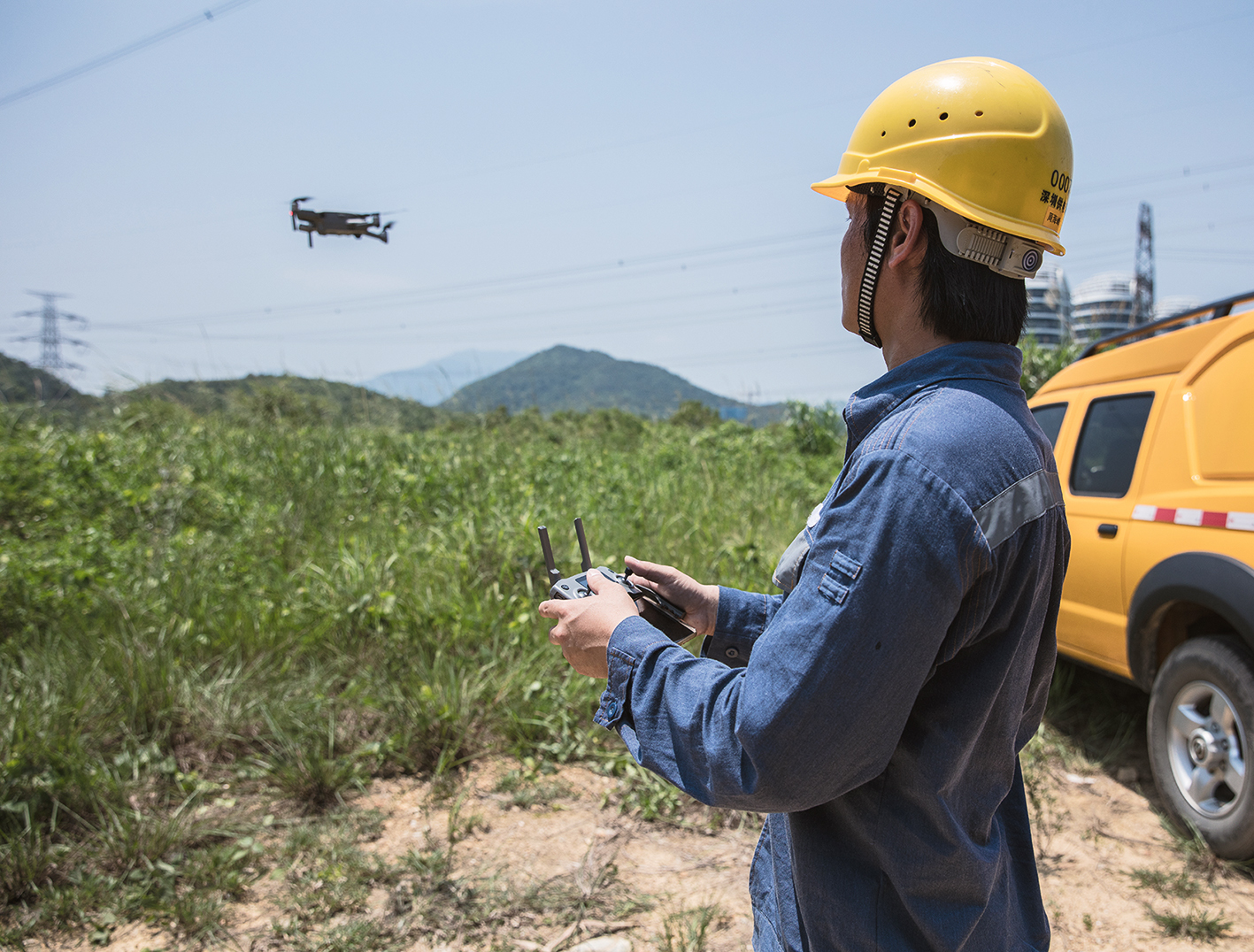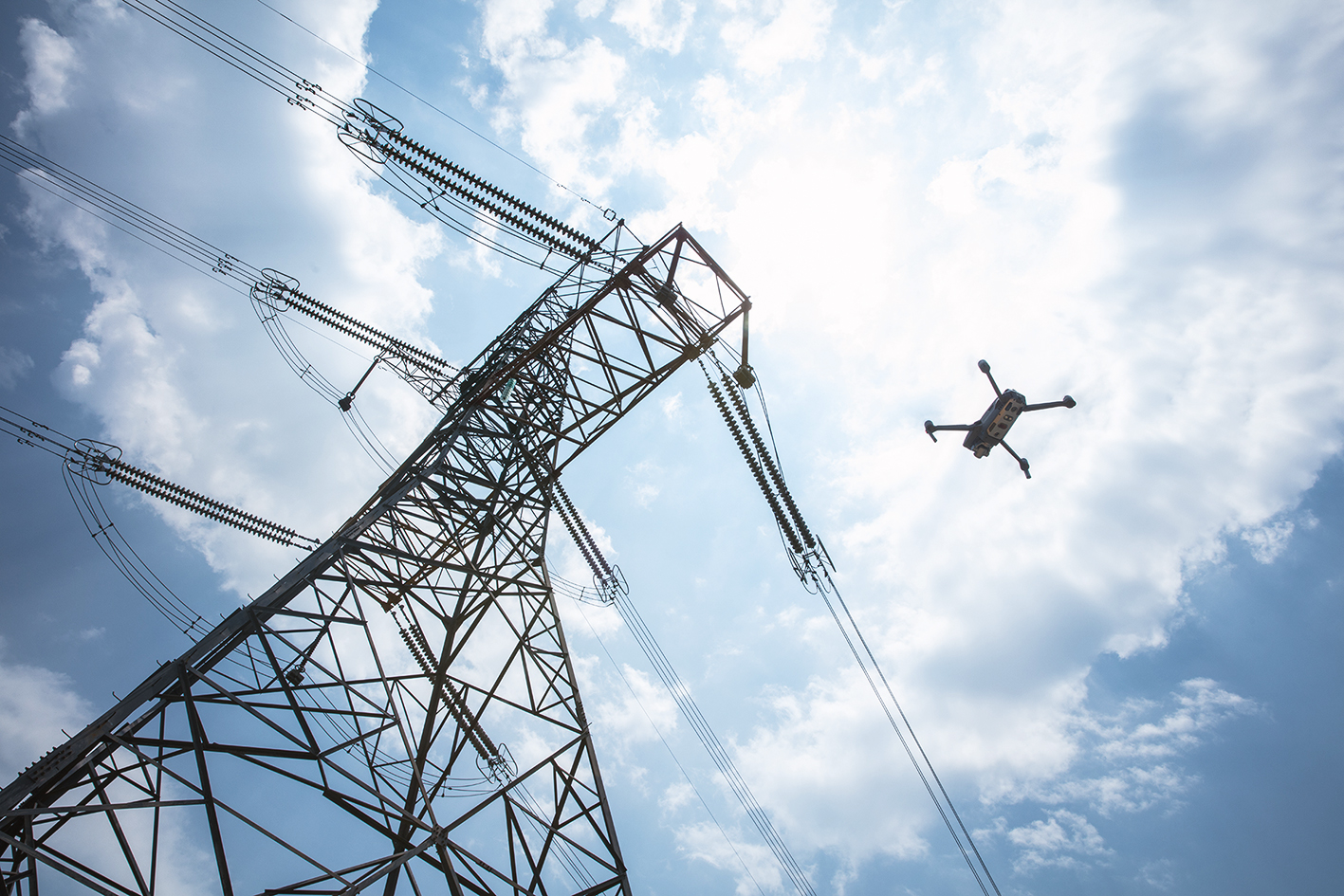Particularly in rural areas, overhead line pylons, as power pylons are actually correctly called, are a formative image alongside wind turbines. In Germany, they reach heights of up to 227 m. The inspection of power pylons is a labor-intensive and cost-intensive activity that can be carried out more safely and efficiently with the help of drones. The efficient FlyNex project management solution ensures scalability, especially for drone projects.
Content
Over 125 years of history meet drones
Regular inspection is essential for a reliable power supply
Why use drones to inspect pylons?
1) The drone is unbeatable in terms of occupational health and safety
2) Finally collecting reasonable stock data
3) Drones are economical and fast
Easy integration of drones through good project management
Over 125 years of history meet drones
The first electricity pylons were erected in Germany as early as 1892. Today there are more than 350,000 pylons that have to be inspected regularly. But before we get to the advantages of the drone inspection, let’s briefly sketch the power grid and some different mast shapes.
The power grid in Germany is divided into four levels, some of which have specific pylons. The transmission grid is responsible for the long-distance transport of electricity. In Germany, the companies Tennet, 50 Hertz, Amprion and TransnetBW take on this task as well as the maintenance and expansion of the transmission grid. The usual voltages are 220 kilovolts (kV) or 380 kV. Typical mast shapes are:
- the Danube mast, which consists of two superimposed trusses, with the narrower one usually at the top,
- the barrel mast, which consists of three superimposed traverses. The middle cross beam is the widest, resulting in the typical barrel shape,
- the portal mast, which consists of at least two supports that promise great stability but require more space,
- the delta mast, in which the conductor traverse sits on a V-shaped fork,
- the fir tree mast was compared to the barrel mast. The largest traverse is at the bottom, the second largest in the middle and the smallest at the top, resulting in the typical fir tree shape.
The other grids are the distribution grid for the supply of industrial companies and the distribution of electricity on the way to the end consumer, the local grids for the supply of larger customers such as hospitals and for further distribution and finally the low voltage grid for distribution and supply to end consumers such as small companies or private households.
Regular inspection is essential for a reliable power supply.
No matter how the shapes and materials of electricity pylons will change in the future, the need for regular inspections will remain. In accordance with § 11 of the Energy Industry Act, electricity network operators are legally obliged to ensure “a safe, reliable and efficient energy supply network” with regard to maintenance and operation. After all, steel lattice masts have an estimated service life of around 80 to 100 years.
How important the regular inspection of power pylons is probably known to some readers from 1999. Hurricane Lothar destroyed countless power pylons made of Thomas steel. Thomas steel tends to become prematurely brittle and thus reduces the load-bearing capacity of the pylons over time. Concrete masts are also particularly susceptible to extreme weather conditions. Hurricane Dorian swept over Germany in 2005, causing trees to fall into power lines. After such extreme events, a follow-up inspection of the power pylons is indispensable to ensure the functionality of the power grid in the long term.
Why use drones when inspecting power pylons?
When it comes to occupational safety, the drone is unbeatable.
Depending on the grid, electricity pylons have an average height of about 22 m for 110 kV lines and 83 m for 380 kV lines. There are about 80,000 pylons in the transmission grid in Germany. Today, these are mostly inspected by observation from the ground using binoculars or by climbing. Inspections by helicopter are also necessary on a regular basis. During these inspections, special attention is paid to the ceramic insulators. This usually requires an ascent by industrial climbers. Especially in bad weather or hard to reach masts, working on partially live components is not a pleasure and always involves a life-threatening risk. Climbers must always be secured by a second person. A drone provides a clear advantage here, as climbing on the power pole is no longer necessary for pure inspection. It is only necessary to climb onto the masts that are actually damaged and that can be repaired. Therefore drones should be implemented in inspection teams.
Collecting reasonable inventory data at last
During a conventional inspection, analog data is usually collected. That data cannot be evaluated sustainably and, at best, ends up as a checklist in a steel cabinet somewhere. The information about which damage was detected on which masts cannot, therefore, be evaluated sustainably. Forecasts or comparisons with inventory data from previous inspections are difficult. Most inspections are therefore purely snapshots.
Drones, on the other hand, can fly directly and 360° around a power pole, generate specific images and transmit them in real time to the inspector standing on the ground. Damage to insulators or conductor ropes, for example, can be detected easier with the aid of various sensors such as optical cameras, infrared or ultrasonic sensors. That digital data can also be integrated into existing information systems and thus help to enrich and improve the data and information content with each inspection. Drones are therefore a useful addition for maintenance and inspection teams.
Cost savings of more than 37 %
In comparison to a classic ascent of a power pole, the drone is significantly faster. On average, it only takes about one-third of the time of a climber per power pole, thus reducing the time required by around 60 %. In perspective, the potential is even greater if the drone can fly independently from one mast to the next.
Assuming that in parallel to the drone pilot, who can, for example, be a climber with additional drone expertise, another climber or assembler belongs to the inspection team, cost savings of more than 37% can be achieved simply by saving time.
Easy integration of drones through good project management
As shown above, the integration of drones in inspection teams is worthwhile in any case, as they represent an efficient and meaningful supplement in the field of inspection of power pylons. A good software solution for the management of drone projects is essential.
Perform or outsource drone inspections yourself
FlyNex offers a qualitative solution, which enables you to keep an eye on the entire project planning, the actual flying and the analysis of the generated data. This enables you to coordinate different projects nationwide, e.g. for drone-based inspection of power pylons, and to keep track of them at all times.
Further advantages of FlyNex:
- Comprehensive role and rights model for revision-proof project management
- Only you have access to your data and you determine who can view which information in the context of the projects
- Easy compliance with all requirements for drone flights due to the most comprehensive and official geodata set for Germany
- Management of all pilots and drones including insurance and proof of knowledge
- Project planning including project profile for easy application
- data protection is guaranteed
With the help of FlyNex, you can outsource inspection orders to other companies so that you can easily benefit from the advantages of drones without having to add drones or pilots to your own portfolio. In project management, you always have the upper hand over all information and are always informed about the current project status. In addition, you receive the analyzed results of the mast inspections much faster than before and can integrate this data into your systems. Start directly and secure your project success. In a later article, you will learn how drones can be used for the inspection of power lines, the measurement of electric and magnetic fields or vegetation management around power lines.
Do you want to stay up to date with drone applications? Then register today for our newsletter on flynex.io.
The FlyNex Team

